Welcome to the blog where you will find musings from around the vineyard and winery. News from the founder Andrew Hodson, a glimpse from the cellar and more.
ANDREW'S NEWSLETTER
VINIFICATION
EVENTS AT VERITAS
Browse by Category
Experience Veritas
Weddings at Veritas
Shop Wines
Continuing the Sparkling Wine Saga
August 14, 2020
by Andrew Hodson | Veritas Vineyard & Winery – Charlottesville, VA

What’s a Pet Nat got to do with Sparkling Wine?
I talked last week of how the British were formative in what was to become the product we now know as “Champagne” but before Champagne became Champagne there existed a way of making wine fizzy by letting yeast referment in a sealed bottle.
The oldest recorded sparkling wine is Blanquette de Limoux, which was apparently “invented” by Benedictine monks in the Abbey of Saint-Hilaire, near Carcassonne in 1531. They achieved this by bottling the wine before the initial fermentation had ended. The French called this way of making sparkling wine the Méthode Ancestral, a method that was most likely discovered by accident.
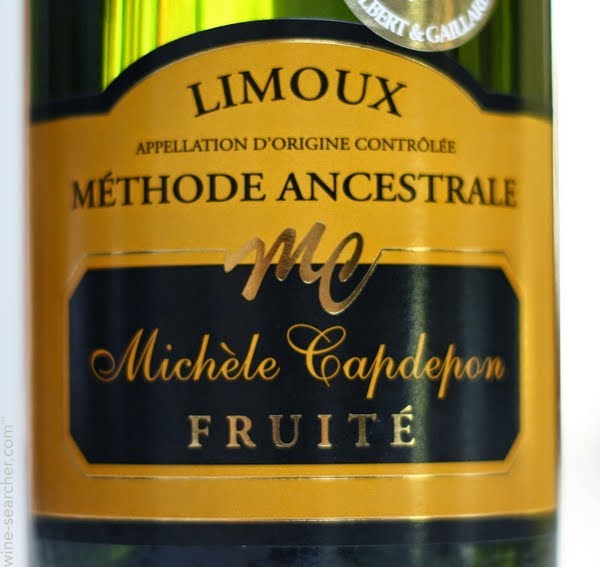
Similarly in other instances wine bottled in late fall may seem to have stopped fermenting not because all the sugar was used up but because the temperature had dropped. Having bottled the wine, the next spring as temperatures warmed up the latent yeast became active again converting sugar to alcohol and carbon dioxide.The carbon dioxide would dissolve into the wine making it fizzy. If the bottle did not explode then one would have a bottle of the equivalent of sparkling wine, except the yeast was still in the bottle and for most French people – Ca, n’est pas bon
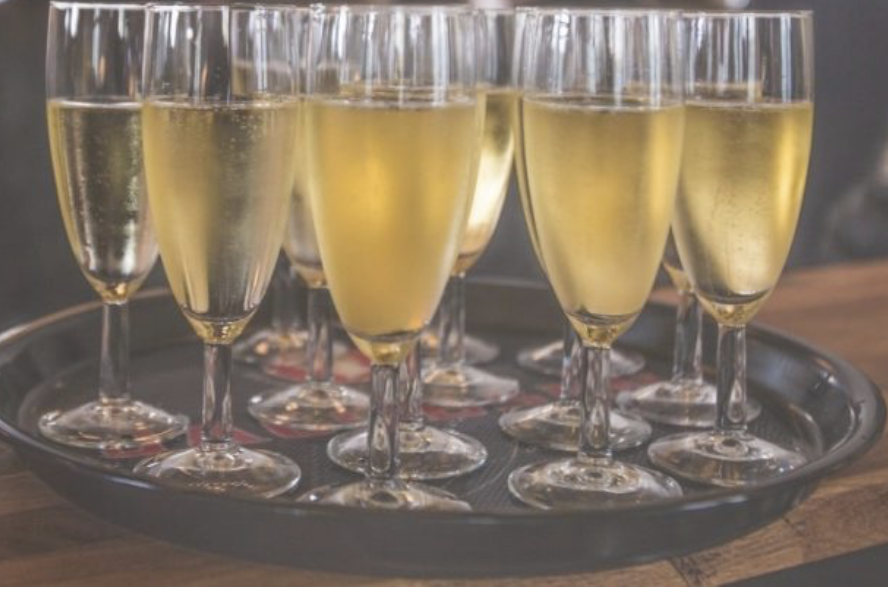
Fizziness in wine comes in different forms depending on the pressure generated inside the bottle. If there has been just a little fermentation after the bottle was sealed the wine can just be a little bit tingly on the tongue what the French call “petillant.” As pressure builds up so the bubbles become more evident forming a “Mousse” what we might call a froth. Not to be taken lightly the mousse of a Champagne is one of its core characteristics. There are those amongst us who hold that the finesse, the very size of the bubbles is a marker of the quality of a Champagne, the smaller the bubbles the softer the mousse and by that reasoning the better is the quality of the wine.
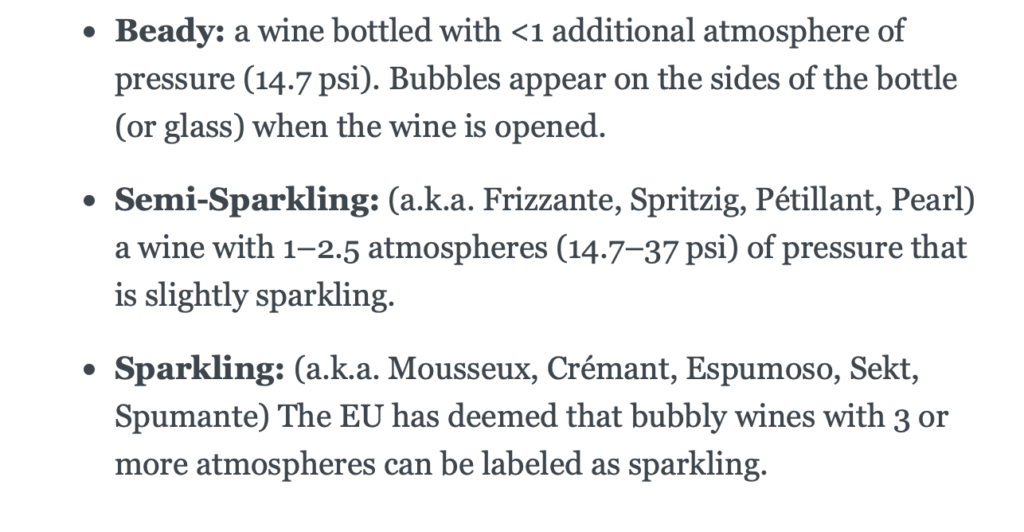
Typically a wine that has been unintentionally fermented in the bottle has low pressure because there was not much residual sugar to convert to alcohol and carbon dioxide so the descriptive term given by the French to a wine made in this fashion was a Vin Petillant Naturel – a naturally made fizzy wine more of a curiosity and often made to chagrin of the winemaker.
Up until ten years ago or so this form of sparkling wine was virtually unknown as a commercial product. Just as organic and biodynamic wines are made with minimal artificial intervention a group of fundamentalist winemakers in France began making petillant naturel wines calling themselves “naturel revivalists.”
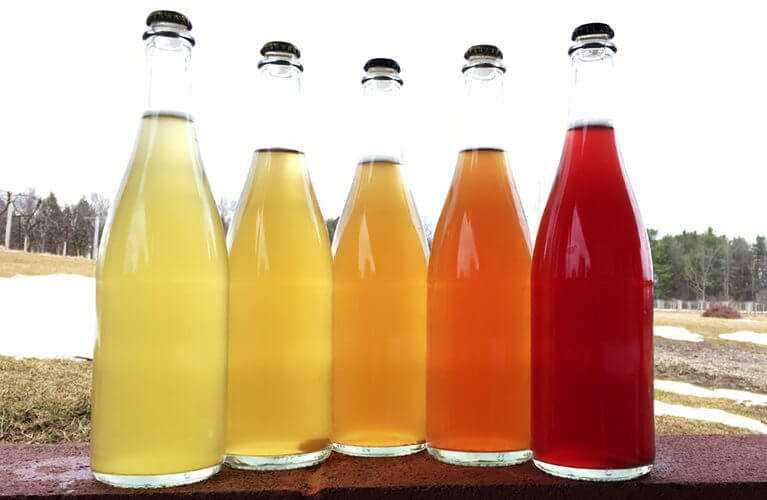
As with many eco friendly developments the trend caught on and we began to witness the production of a variety of different wines using grapes of all stripes and all styles ranging from sweet to dry from clear to cloudy. Typically the wines are of lower pressure and lower alcohol and more often than not, off -dry to sweet. Before long, probably in the last 10 years everyone and their brother are producing “Pet Nats” the hip name for petillant naturel wines, the “new” ancient method of making sparkling wine even labeled as “Hipsters Bubbly.” To prove the point, our very own Elliott Watkins in his thirst for sparkling experience was the man behind a small production of a Pet Nat for Flying Fox. It sold well yet it was not sustainable in terms of labor costs and marketability. I doubt you will ever see a Pet Nat on a supermarket shelf.
So what do Pet Nats have to do with traditional method sparkling wines aka Champagne.
Well as I have described the key difference between a traditional sparkling wine and a Pet Nat is the presence of yeasts in the Pet Nat.
The story of how the yeast got taken out of the bottle of a sparkling wine is quite fascinating and worth recounting.
The key figure in the story is Veuve Clicquot or widow Clicquot, François Clicquot and Barbe-Nicole Ponsardin were married in 1798. To make a long story short Francois was very successful in building the Champagne business but seven years after their marriage he died suddenly of Typhoid fever. Of course, the world was devastated and even worse the couple had no male successor.
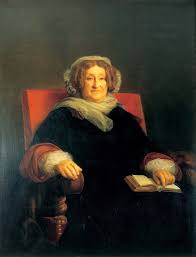
In the early 19th century, the Napoleonic Code denied women civil and political rights, prohibiting them from working, voting, earning money, or entering schools and universities without the consent of their husband or father. At that time, widows were the only women in French society to be free and to be allowed to run their own business. Known as Veuve Clicquot she created her own company, Veuve Clicquot -Ponsardin in 1810. Against all conventions of the times she became the first woman to take over a champagne house. She was a great innovator amongst the things she is credited with is the concept of “marketing” by making her wine stand out from her competitors, indeed one could say she had the business sense to know how to build a brand and build she did.
She was the one who made her brand famous. She did so by a number of means the first was to break an embargo on French champagne to the Russian royal family at the time of the Napoleonic Franco- Russian war in 1814. She was the one who devised the orange color that made her labels stand out against the competition (the color was later patented); she was the one who created the concept of a vintage year champagne and she is credited with adding red wine to champagne to create the concept of a Rosé champagne.
However, her biggest contribution to the evolution of Champagne was the process of what the French call “Remuage” or what we call riddling.
The story goes that she and her cellar master Antoine Müller used her very own dining table to create a riddling table. Holes were drilled to allow the bottle to sit neck down or sur point so that the yeast from would collect in the neck of the bottle. The process was encouraged by gradually twisting the bottles by a quarter of a turn every day. With the yeast settled in the neck it was possible to remove the cork, expel the yeast plug and refill the bottle with the lost volume of wine.The expulsion of the yeast plug is known as dégorement or disgorging. A later development in 1884 came with dégorgement à la glace when the bottleneck dipped in a freezing solution of glycol allows the plug of yeast to be ejected more efficiently with less wine loss.
Veuve Clicquot died in 1866, she contributed a wealth of innovations in the evolution of the traditional method of making sparkling wine.
No wonder after her death she was named the Grand Dame of Champagne!- a woman of her time.
One of the reasons I am telling you this abbreviated form of the story is because what Veuve Clicquot pioneered is up and running at the Virginia Sparkling Company. Riddling racks have been replaced with automatically controlled gyro palates and dégorgement à la glace is allowing Elliot Watkins, our sparkling wine cellar master to disgorge 1000 bottles of sparkling wine an hour!
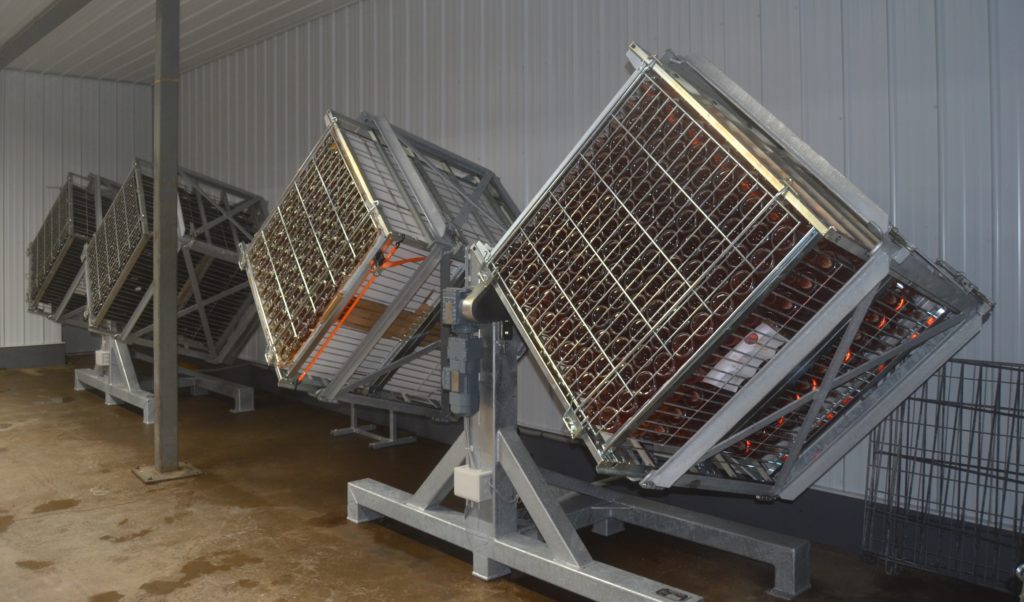

In this Covid world of uncertainty it gives us all a huge sense of relief to think we are going forward, just like the widow Clicquot went forward against all odds.
We are celebrating our launch into the future of quality traditional method sparkling wine production with a pre-release of our 2015 Scintilla for wine club members only
And look out for our first sparkling wine virtual tasting with Elliott and Emily on the 27th of August.
Till next time – Keep Sparkling
Andrew Hodson
Raconteur and Dilettante.
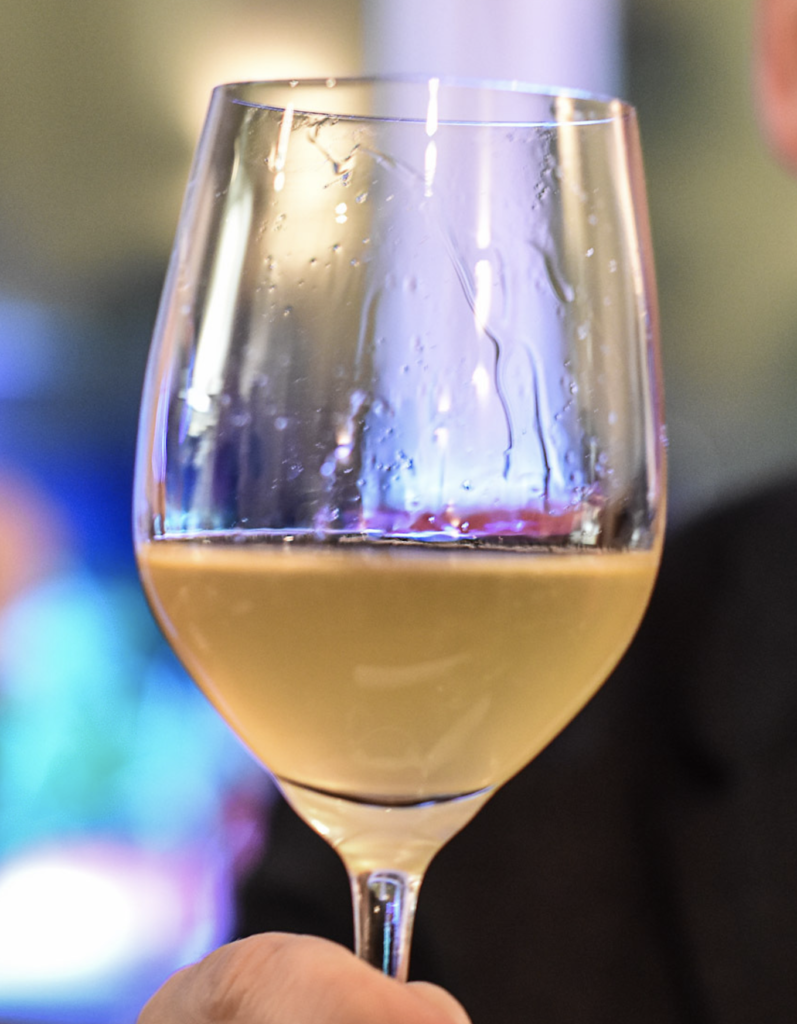

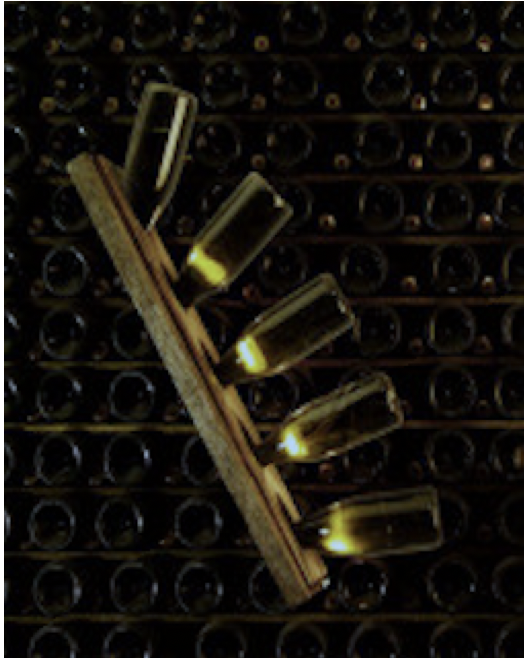
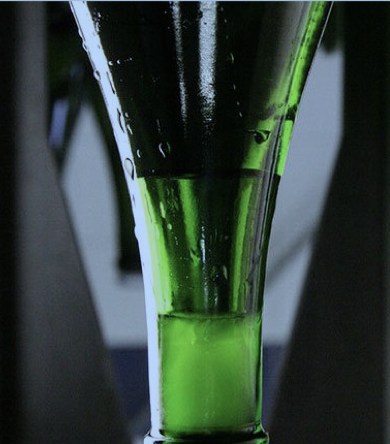
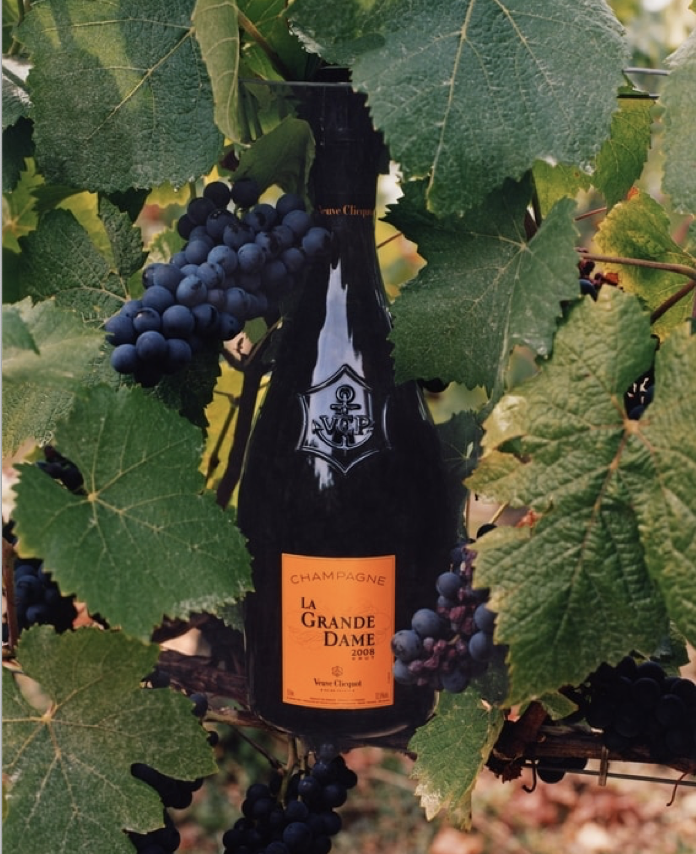
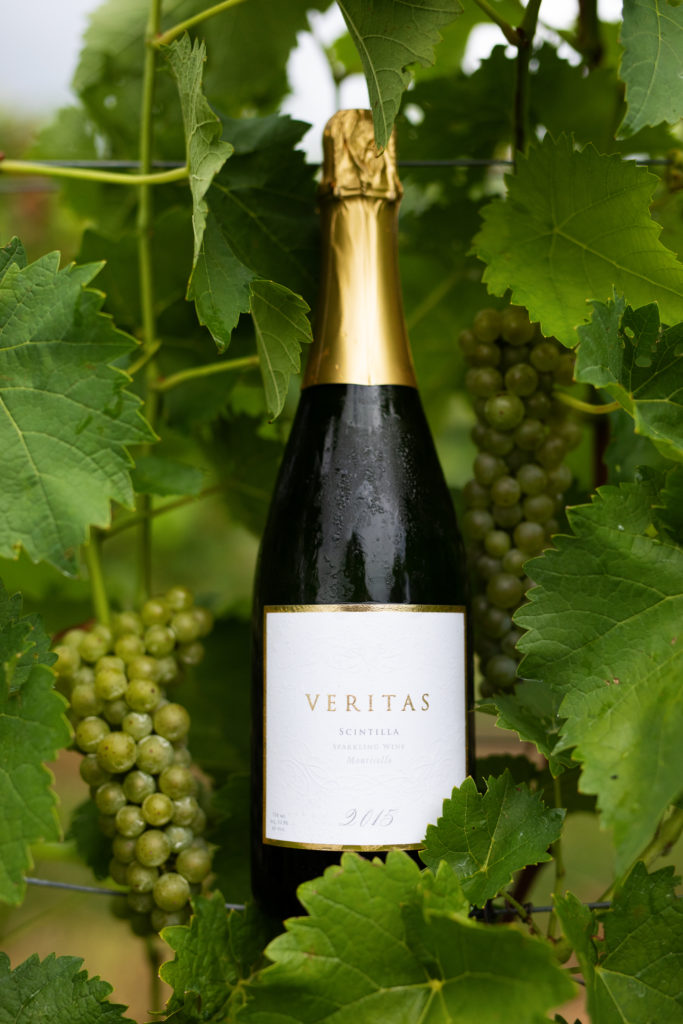
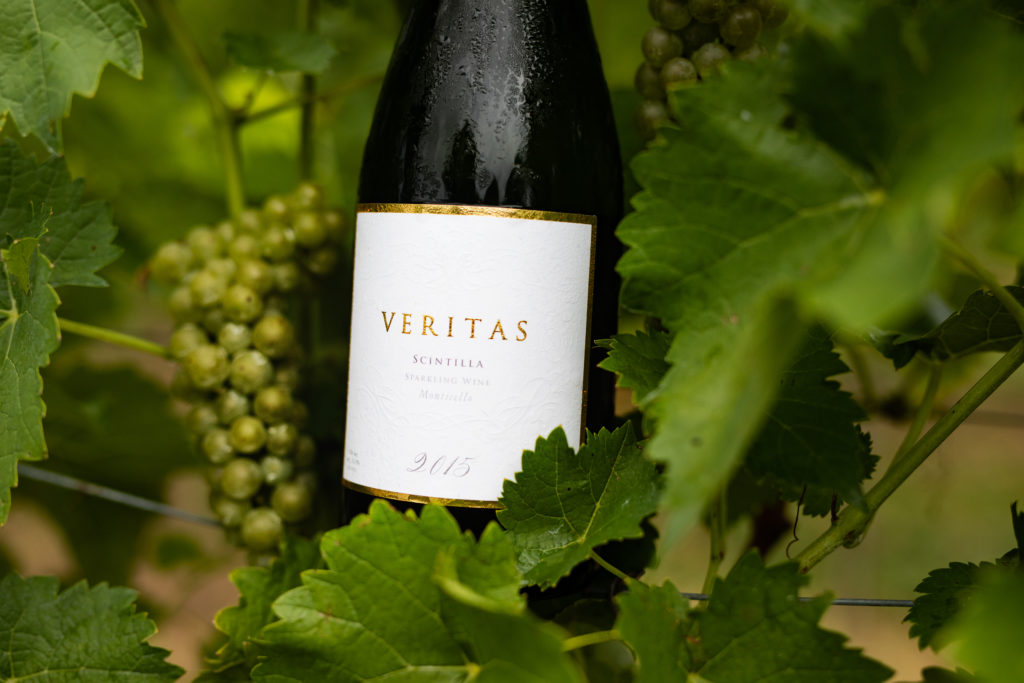
Really super read!